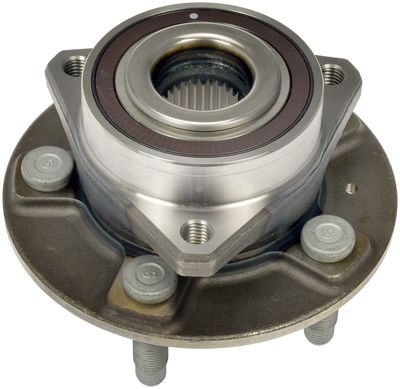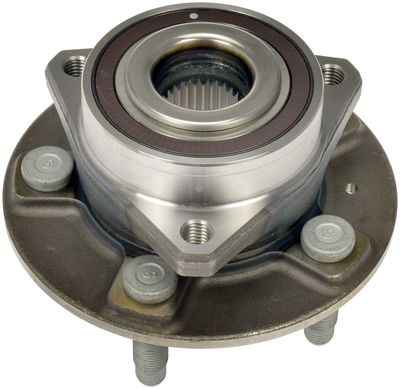Answer
Aug 15, 2024 - 08:08 AM
Determining if your Timken HA590486 Wheel wheel-bearing hub Assembly, or any wheel-bearing hub assembly, is faulty involves observing various symptoms and performing some diagnostic checks. Here are the key signs and methods to identify a faulty wheel bearing hub assembly:
1. Unusual Noises:- Grinding or Growling Noise: A common sign of a failing wheel bearing hub assembly is a grinding or growling noise coming from the wheel area. This noise is typically more noticeable when the vehicle is in motion and may change pitch or volume when turning.
- Clicking or Snapping Sound: You might hear a clicking or snapping noise when turning. This can indicate a worn or damaged bearing within the hub assembly.
- Humming or Whirring Noise: A continuous humming or whirring noise, especially noticeable at higher speeds, can indicate that the wheel bearing is failing.
- Steering Wheel Vibration: If the wheel bearing hub assembly fails, you may feel a vibration or shaking in the steering wheel, particularly when driving at higher speeds.
- Vehicle Pulling: A faulty wheel bearing can cause the vehicle to pull to one side, especially during braking or turning.
- Wheel Play: Jack up the vehicle and manually check for play in the wheel. Grasp the wheel at the 12 and 6 o’clock positions and try to rock it back and forth. If there is excessive play, the wheel bearing hub assembly might be worn or loose.
- Axial or Radial Play: There should be little to no axial (side-to-side) or radial (up-and-down) play in the wheel. Excessive movement can indicate a worn or damaged bearing.
- ABS Sensor Malfunction: If your vehicle is equipped with an ABS (Anti-lock Braking System) and the Timken HA590486 Wheel Bearing Hub Assembly has an integrated ABS sensor, a failing bearing could trigger the ABS warning light. This might happen if the sensor is damaged or if the bearing is worn to the point where it affects sensor readings.
- Irregular Tire Wear: A faulty wheel bearing hub assembly can cause uneven or abnormal tire wear. If you notice unusual wear patterns on the tire, especially cupping or scalloping, it could be due to a bad wheel bearing.
- Overheating: After driving, check if the wheel hub area is excessively hot to the touch compared to the others. A failing bearing generates more friction, leading to increased heat. Be careful when checking for heat, as the area might be very hot.
- Inspect for Damage: Look for signs of damage, such as grease leakage around the wheel hub area or visible wear and tear on the assembly. Grease leaks can indicate a damaged seal, which could lead to bearing failure.
- Rust or Corrosion: Rust or corrosion on the hub assembly can also indicate that the bearing is compromised, especially if the vehicle has been exposed to harsh conditions or has high mileage.
- Listen and Feel While Driving: During a test drive, pay attention to any noises, vibrations, or changes in vehicle handling. If you notice noise that gets louder with speed or changes with steering input, the wheel bearing hub assembly is likely faulty.
If you observe any of these symptoms—unusual noises, vibrations, wheel play, uneven tire wear, ABS warning lights, or excessive heat—it’s a strong indication that your Timken HA590486 Wheel Bearing Hub Assembly may be faulty and in need of replacement. Diagnosing and replacing a faulty wheel bearing hub assembly promptly is important to ensure safe vehicle operation and prevent further damage to the vehicle's suspension or braking systems.





Add New Comment